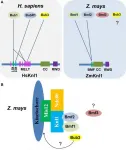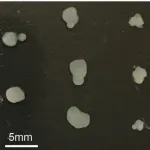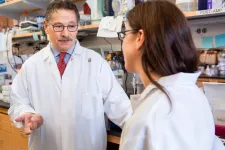(Press-News.org) Air quality in Spain temporarily improved during the first wave of COVID-19, largely as a result of mobility restrictions. Until recently, however, the effect of this improvement on the health of the population was poorly understood. A new study led by the Barcelona Institute for Global Health (ISGlobal), a centre supported by the "la Caixa" Foundation, together with the Barcelona Supercomputing Center (BSC-CNS), has estimated that this improvement in air quality prevented around 150 premature deaths in Spain's provincial capital cities.
Several analyses have estimated the mortality reduction from improved air quality during lockdown periods in China and Europe and found that a substantial number of premature deaths have been avoided. The new study, published in Environmental Pollution, is the first to focus on Spain, specifically 47 provincial capitals. First, the researchers assessed changes in levels of air pollution--nitrogen dioxide (NO2) and ozone (O3)--during the lockdown period (57 days) and deconfinement period (42 days) of the first wave of COVID-19, which occurred between March and June 2020. The team then estimated the impact of these air quality changes on mortality at the population level.
Lead author Hicham Achebak, a researcher at ISGlobal and at the Centre for Demographic Studies (CED), explained the methodology used in the study. "We used machine-learning techniques to take into account the influence of meteorological factors when quantifying the effect of lockdown on air quality levels," he noted. "To estimate changes in mortality, we specifically fitted epidemiological models based on historical health and air pollution data in each provincial capital city."
The authors found that NO2 levels decreased by 51% and 36% during the lockdown and deconfinement periods, respectively, during the first wave of COVID-19. The level of ozone decreased much less on average--by 1.1% and 0.6%, respectively--although it increased in some of the most populous cities.
Regarding the impact of the reduction in NO2 on premature mortality, the authors estimated that around 120 and 50 deaths were avoided during lockdown and deconfinement, respectively, for a total of approximately 170 premature deaths avoided. COVID-19 lockdowns led to "unprecedented reductions in NO2 concentrations, especially when the most stringent measures to reduce viral spread were applied, reaching up to 65% in some of the cities studied," explained Hervé Petetin, researcher at BSC-CNS, who was responsible for the application of machine-learning techniques. Most of the NO2 emissions in cities come from vehicles, in particular those with diesel-powered engines.
In the case of ozone, the decrease was so small that no premature deaths could be attributed to it. In fact, the researchers estimated that premature mortality attributable to this pollutant increased by approximately 20 deaths during the study period. Carlos Pérez García-Pando, ICREA research professor, AXA professor and head of the BSC-CNS Atmospheric Composition Group, which participated in the study, explained: "Even though, on average, there was a small reduction in ozone during the study period, ozone levels increased in the most populous cities, especially Barcelona and Madrid." He added: "Ozone is a secondary pollutant that can increase when levels of nitrogen oxides decrease in environments that are saturated with this pollutant, such as large urban areas." The study shows that "potential trade-offs between multiple pollutants should be taken into account when evaluating the health impacts of environmental exposures," he concluded.
Joan Ballester , researcher at ISGlobal and coordinator of the study, commented: "The number of deaths prevented by improvements in air quality in Spain could be greater." The researcher cited two main reasons for this assertion: "First, our study focused on provincial capitals, but there are other cities with high levels of air pollution. Second, we did not take into account reductions in fine particulate matter, which were relatively modest compared to the reductions in NO2 but most likely contributed to a further decrease in premature mortality."
"These findings demonstrate the major short-term health benefits associated with reducing air pollution," added Ballester. "With permanent reductions in emissions, the positive effects could be even greater." In addition to reducing premature mortality, improvements in air quality "could reduce the disease burden of epidemics that cause respiratory infections such as COVID-19, since diseases caused by long-term exposure to air pollution are in turn risk factors for the severity and mortality of coronavirus infection," concluded the researcher.
INFORMATION:
Reference
Hicham Achebak, Hervé Petetin, Marcos Quijal-Zamorano, Dene Bowdalo, Carlos Pérez García-Pando, Joan Ballester. Trade-offs between short-term mortality attributable to NO2 and O3 changes during the COVID-19 lockdown across major Spanish cities. Environmental Pollution. May 2021. doi.org/10.1016/j.envpol.2021.117220.
The tightly defined ratios of metals in MOFs makes them ideal starting materials for novel catalyst creation.
Heating bimetallic metal organic frameworks (MOFs) until their porous structure collapses into nanoparticles can be a highly effective way to make catalysts. This novel approach to catalyst design has now been used by KAUST and Spanish researchers to make a robust catalyst that converts carbon dioxide (CO2) into carbon monoxide (CO) gas with unprecedented selectivity.
The benefit of this method pioneered at KAUST is that it can generate mixed metal catalytic nanoparticles that have proven challenging or impossible to make by conventional means.
Capturing ...
Published today in Nature Communications, the team from the Peter Doherty Institute for Infection and Immunity (Doherty Institute), Alfred Health and Monash University sought to understand which patients would recover quickly from influenza and which would become severely ill.
The four-year project took samples from patients hospitalised with influenza at up to five time points during their hospital stay, and 30 days after discharge. They analysed the breadth of the immune response, enabling them to describe the specific roles of several different types of immune cells, including killer and helper T cells, B cells and innate cells.
University of Melbourne Dr Oanh Nguyen, Research Fellow at the Doherty Institute, said two significant findings of the research include understanding ...
A group of researchers from Osaka University developed a quadruped robot platform that can reproduce the neuromuscular dynamics of animals (Figure 1), discovering that a steady gait and experimental behaviors of walking cats emerged from the reflex circuit in walking experiments on this robot. Their research results were published in Frontiers in Neurorobotics.
It was thought that a steady gait in animals is generated by complex nerve systems in the brain and spinal marrow; however, recent research shows that a steady gait is produced by the reflex circuit alone. Scientists discovered a candidate of reflex circuit to generate the steady walking motion ...
Dr. HAN Fangpu's group from the Institute of Genetics and Developmental Biology of the Chinese Academy of Sciences reports the identification and functional study of the maize Knl1 gene in an article published online in PNAS. The gene is a major component of the KMN network that links centromeric DNA and the plus-ends of spindle microtubules. It also plays an important role in kinetochore protein recruitment.
The kinetochore complex that assembles on the centromeres mediates the proper partitioning of chromosomes to daughter cells during the cell cycle. However, kinetochore proteins undergo frequent mutations and coevolve with their interaction partners, leading to great diversity in kinetochore composition in eukaryotes.
Functional ...
A team of researchers, affiliated with UNIST has recently introduced a new class of magnetic materials for spin caloritronics. Published in the February 2021 issue of Nature Communications, the demonstrated STE applications of a new class of magnets will pave the way for versatile recycling of ubiquitous waste heat. This breakthrough has been led by Professor Jung-Woo Yoo and his research team in the Department of Materials Science and Engineering at UNIST.
Spin thermoelectrics is an emerging thermoelectric technology that offers energy harvesting from waste heat. ...
Like many around the world, the lab of Professor Mriganka Sur in The Picower Institute for Learning and Memory at MIT has embraced the young technology of cerebral organoids, or "minibrains," for studying human brain development in health and disease. By making a surprising finding about a common practice in the process of growing the complex tissue cultures, the lab has produced both new guidance that can make the technology better, and also new insight into the important roles a prevalent enzyme takes in natural brain development.
To make organoids, scientists take skin cells from a donor, induce them to become stem cells and then culture those in a bioreactor, guiding their development with the addition of growth ...
COLUMBUS, Ohio - People are more persuaded by the actual messages contained in social media posts than they are by how many others viewed the posts, a new study suggests.
Researchers found that when people watched YouTube videos either for or against e-cigarette use, their level of persuasion wasn't directly affected by whether the video said it was viewed by more than a million people versus by fewer than 20.
What mattered for persuasion was viewers' perception of the message as truthful and believable.
"There wasn't a bandwagon effect in which people were persuaded by a video just because ...
An international team of researchers at Great Ormond Street Hospital (GOSH), and University of California, Los Angeles (UCLA) have developed a gene therapy that successfully treated 48 out of 50 children with a form of severe combined immunodeficiency that leaves them without an immune system.
Severe combined immunodeficiency due to adenosine deaminase deficiency, also known as ADA-SCID, is a rare, life-threatening disease that prevents children from living a normal life. It is caused by mutations in the gene that creates the enzyme adenosine deaminase, which is essential to a functioning immune system.
Children with ADA-SCID have no immune system and, if left untreated, the condition can be fatal within the first two years of life. Day-to-day activities ...
An experimental form of gene therapy developed by a team of researchers from UCLA and Great Ormond Street Hospital in London has successfully treated 48 of 50 children born with a rare and deadly inherited disorder that leaves them without an immune system.
Severe combined immunodeficiency due to adenosine deaminase deficiency, or ADA-SCID, is caused by mutations in the ADA gene that creates the enzyme adenosine deaminase, which is essential to a functioning immune system. For children with the condition, even day-to-day activities like going to school or playing with friends can lead to dangerous, life-threatening infections. If untreated, ADA-SCID can be fatal within the first two years of life.
The investigational gene therapy method involves first collecting ...
CAMBRIDGE, MA -- In early 2020, a few months after the Covid-19 pandemic began, scientists were able to sequence the full genome of the virus that causes the infection, SARS-CoV-2. While many of its genes were already known at that point, the full complement of protein-coding genes was unresolved.
Now, after performing an extensive comparative genomics study, MIT researchers have generated what they describe as the most accurate and complete gene annotation of the SARS-CoV-2 genome. In their study, which appears today in Nature Communications, they confirmed ...




